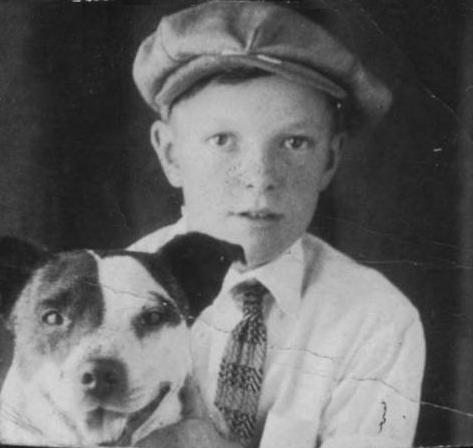
United States Boys' Caps: Chronology
Caps are a relatively modern innovation, at least the caps that have the partial frontal brim. We do see them worn extensively in the 18th century. It seems to have been a military style with caps becoming an important military style during the Napoleonic Wars of the early-19th century. This was certainly a factor in popularizing caps with boys. Not only were styles clearly military in origin, but the tassels worn with them also can be seen on boys' caps. Even so, hats overall seem more common with boys than caps. This was not the case in the winter when caps were developed for cold weather winter wear. This changed in the 20th century. Hats were still worn during the first half of the 20th century, but caps becamre mire common. There were social class variations, although in the second half of the century, hats became rare. The baseball cap slowly emerged as the dominant headwear style. In the 21st century, we rarely see American boys wearing hats, but we see boys all over the world wearing baseball caps.
17th Century
We notice some Renaissance headwear that might be called caps, but we do not see any headwear with the visor (bill or peak), but of course, colonists begin to arrive in what is now the United States until the 17th century. We are not familiar with any caps styles worn by the colonists in the 17th century.
18th Century
Caps are a relatively modern innovation, at least the caps that have the partial frontal brim. We do see them worn extensively in the 18th century. We see some military caps, but they were not very common. And we do not see boys wearing them, although our archive is very limited. Some winter fur headwear has the look of caps.
The cap seems to have been a military style with caps becoming an important military style during the Napoleonic Wars of the early-19th century. Calvalry men tended to wear caps as the visor improved visibility by shielding the sun's glare and they were likely to loose hats with brims in the heat of battle. Thus the cap acquired the image of a dashing calvalry soldier. This was certainly a factor in popularizing caps with boys. Not only were styles clearly military in origin, but the tassels worn with them also can be seen on boys' caps. We see boys wearing these caps with both skeleton suits and tunic outfits. American soldiers also wore these caps in the Mexican War (1846-48). The kepi was worn during the Civil War (1861-65), but never became a major boys' style. Caps were worn by boys, but even so, hats overall seem more common with boys than caps. This was not the case in the winter when caps were developed for cold weather winter wear. This was a 19th century developmednt. We do not notice winter caps in the 18th century with the exception of somne fur headwear. We are not entirely sure when cold weather caps first appeared, but we believe it was around mid-century.

Figure 1.--The flat cap along with corduroy knickers were virtually a symbol of American boyhood during the 1910s-20s. Here a boy in the 1920s wears a standard flat cap for a photo booth portrait. His faithful pooch seems an enthusiastic participant. We are not sure what happened when the flashes started firing.
|
|
The importance of hats shifted with the 20th century. Hats were still worn during the first half of the 20th century, but caps became more common. There was a proliferation of cap styles in the 1880s-1900s. There were social class variations, although in the second half of the century, hats became rare. There was a range of different cap styles in the early-20th century. Most had visors (bills/peaks), but the crowns varied considerably. We see peaked caps (called a school cap in England), flat caps, and a kind of peaked military style. We still see some Glengaries in the 1900s, but mostly with upper-class families. nd we see sailor caps in the1900s-10s, but far fewer after World Wat I kn the 1920s.
The flat cap was seen in the 1900, but as one of many popular styles. Ths changed and the flat cap between the standard boys' cap during the 1910s and 20s. Girls and younger boys might wear berets. There were other choices such as the aviator cap, but this was more of a winter cap. Beanies were also popular. Sailir swabbie caos became popular in the World War II era. Beanies became popuar in the 1910s as did swabie caps in the 30s. There were also various cold weather caps. Stocking caps were wideky worn,. The peaked cap continued to be worn, but acquired a kind of upper-class image and eventually a little boy image. The once dominat fkat cap began to declin in popularity aftr te early-50s. The baseball cap slowly emerged as the dominant headwear style. We see boyswearing homberg hats in te 50s, ut this was a short lived phenomenon. By the 60s boys no longer wore headwear when dressng up. Cap might be wrn for nclement weater. Caps became a casualitem. And thge only importnt style was the baseball cap.
21st Century
We rarely see American boys wearing hats in the 21st century. We do see American boys continuing to wear baseball caps as well as boys all over the world.
HBC

Navigate the Boys' Historical Clothing Web Site:
[Return to the Main U.S. cap page]
[Return to the Main U.S. cap style page]
[Return to the Main fez page]
[Introduction]
[Activities]
[Biographies]
[Chronology]
[Clothing styles]
[Countries]
[Bibliographies]
[Contributions]
[FAQs]
[Glossary]
[Images]
[Links]
[Registration]
[Tools]
[Boys' Clothing Home]
Created: 7:11 AM 8/30/2010
Last updated: 10:25 AM 8/13/2014



